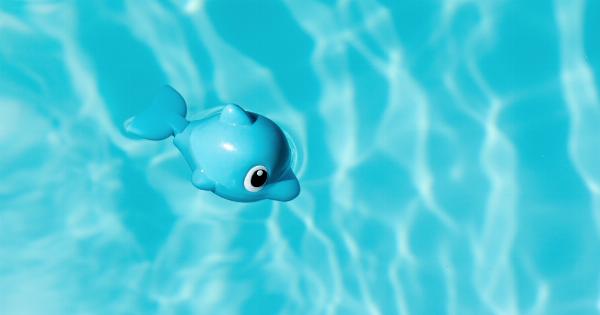Canned seafood is a convenient choice for many consumers seeking a quick and easy way to incorporate seafood into their diet. It offers a longer shelf life, easy storage, and can be used in a variety of recipes.
However, not all canned seafood options are created equal. Some types may pose health risks or be environmentally unsustainable. In this article, we will explore the types of canned seafood that you should remove from your shopping list and provide healthier alternatives.
1. Tuna with High Mercury Levels
Tuna is a popular choice when it comes to canned seafood. However, certain species of tuna can contain high levels of mercury.
Mercury is a toxic heavy metal that can have detrimental effects on human health, particularly on the nervous system and developing fetuses. Pregnant women and young children should be particularly cautious about consuming tuna with high mercury levels.
2. Farmed Shrimp with Antibiotics
Farmed shrimp is another widely available canned seafood option. However, certain farms use antibiotics to prevent diseases and promote growth in their shrimp.
These antibiotics can end up in the canned shrimp and may contribute to antibiotic resistance in humans. It’s best to opt for wild-caught shrimp or shrimp from responsible aquaculture practices to avoid potential health risks.
3. Non-Sustainable Anchovies
Anchovies are a popular choice for adding a salty punch to various dishes. However, the sustainability of anchovy fishing can vary.
It’s important to choose canned anchovies that are sourced from sustainable fisheries to protect the ocean’s delicate ecosystems and ensure a healthy population of this small fish species.
4. Swordfish with High Levels of PCBs
Swordfish is a prized fish often enjoyed grilled or pan-seared. However, it can contain high levels of polychlorinated biphenyls (PCBs), which are toxic chemicals with potential health risks.
PCBs are persistent in the environment and accumulate in the fatty tissues of fish like swordfish. Consuming canned swordfish with high PCB levels regularly may increase your exposure to these harmful substances.
5. Canned Clams and Mussels with High Sodium Content
Canned clams and mussels can be a convenient addition to soups, stews, and pasta dishes. However, some canned varieties may have a high sodium content.
Excessive sodium intake has been linked to increased blood pressure and an increased risk of heart disease. To limit your sodium intake, check the nutrition labels and opt for low-sodium or no-salt-added options.
6. Non-Dolphin-Safe Canned Tuna
Sometimes dolphins get caught in fishing nets when tuna is being caught.
To ensure the protection of these marine creatures, it’s essential to choose canned tuna that is labeled as “dolphin-safe.” Dolphin-safe tuna is caught using practices that minimize the harm to dolphins and other marine life, making it a more ethical choice.
7. Canned Sardines with BPA-Lined Cans
Sardines are a popular choice due to their high nutritional value and omega-3 fatty acid content. However, it is crucial to consider the type of cans in which they are preserved.
Some canned sardines are packed in cans lined with bisphenol A (BPA), a chemical that has been linked to various health issues. Opt for sardines in BPA-free cans to reduce your exposure to this potentially harmful chemical.
8. Caviar from Unsustainable Sources
Caviar, considered a delicacy, is the processed roe (fish eggs) of certain fish species, typically sturgeon. However, not all sources of caviar are sustainable.
Overfishing and illegal harvesting practices have put some sturgeon species on the brink of extinction. To support sustainable practices and protect these valuable fish species, choose caviar from reputable and sustainable sources.
9. Canned Crab with Preservatives
Canned crab can be an excellent addition to salads, crab cakes, or dips. However, some canned crab varieties may contain preservatives or artificial additives to extend their shelf life.
These additives may not be the best choice for those seeking a more natural and unprocessed canned seafood option. Look for canned crab that lists minimal ingredients and no artificial additives.
10. Red Snapper with High Mercury Levels
Red snapper is a popular fish enjoyed in various cuisines. However, like tuna, red snapper can also contain high levels of mercury. Consuming canned red snapper with elevated mercury levels may put you at risk of mercury toxicity.
It’s best to limit your intake or choose alternative fish options that are lower in mercury.
Healthy Alternatives to Consider
Now that you know which types of canned seafood to avoid, you may be wondering which healthier alternatives you can add to your shopping list. Here are some options:.
1. Sardines in Olive Oil
Sardines packed in olive oil are an excellent choice due to their many health benefits. They are rich in omega-3 fatty acids, vitamin D, and calcium. Look for sustainable, BPA-free packaging for added peace of mind.
2. Wild Alaskan Salmon
Wild Alaskan salmon is not only delicious but also a great source of omega-3 fatty acids, protein, and essential nutrients like selenium and vitamin D. Opt for canned salmon labeled as sustainably caught.
3. Clams and Mussels in Water
Choose canned clams and mussels that are packed in water to reduce sodium content. They can still add flavor and texture to your dishes without the excessive sodium.
4. Smoked Oysters
If you enjoy the smoky flavor of oysters, opt for canned smoked oysters. They are a good source of zinc, iron, and vitamin B12. Look for varieties that do not contain any added oils or high sodium levels.
5. Albacore Tuna from Sustainable Sources
If you want to continue enjoying canned tuna, opt for albacore tuna from sustainable sources that have been tested for mercury levels.
Look for labels such as “pole and line caught” or “troll caught” to ensure responsible fishing practices.
6. Sustainable Crab Varieties
Look for canned crab options that are sustainably caught and free of preservatives or additives. Seek out crab products that prioritize environmental responsibility and use minimal processing.
7. Anchovies from Sustainable Sources
When purchasing canned anchovies, make sure to choose those that are sourced from sustainable fisheries. These will help protect the ocean’s biodiversity and support responsible fishing practices.
8. Mackerel in Olive Oil
Mackerel is a flavorful fish that is rich in omega-3 fatty acids. Opt for canned mackerel packed in olive oil for an excellent source of healthy fats.
9. Herring in Tomato Sauce
Herring is another fish that can be enjoyed in canned form. Look for herring packed in natural tomato sauce for a tangy and nutritious option.
10. Sustainable Caviar Alternatives
If you still want to indulge in the luxury of caviar, choose sustainable alternatives such as roe from trout or other fish species. These alternatives offer a similar taste experience without contributing to unsustainable practices.
By being mindful of the types of canned seafood you purchase, you can support your health and the environment.
Opt for sustainable options and check labels for indicators of responsible fishing practices and lower levels of mercury or harmful substances. With healthier choices, you can confidently continue to enjoy the convenience and deliciousness of canned seafood.































